The Spooktacular History and Traditions of Halloween
Halloween is celebrated on October 31st and originated from the ancient Celtic festival of Samhain, marking the end of harvest and the start of winter. Today, it includes activities like trick-or-treating, costume parties, and pumpkin carving.
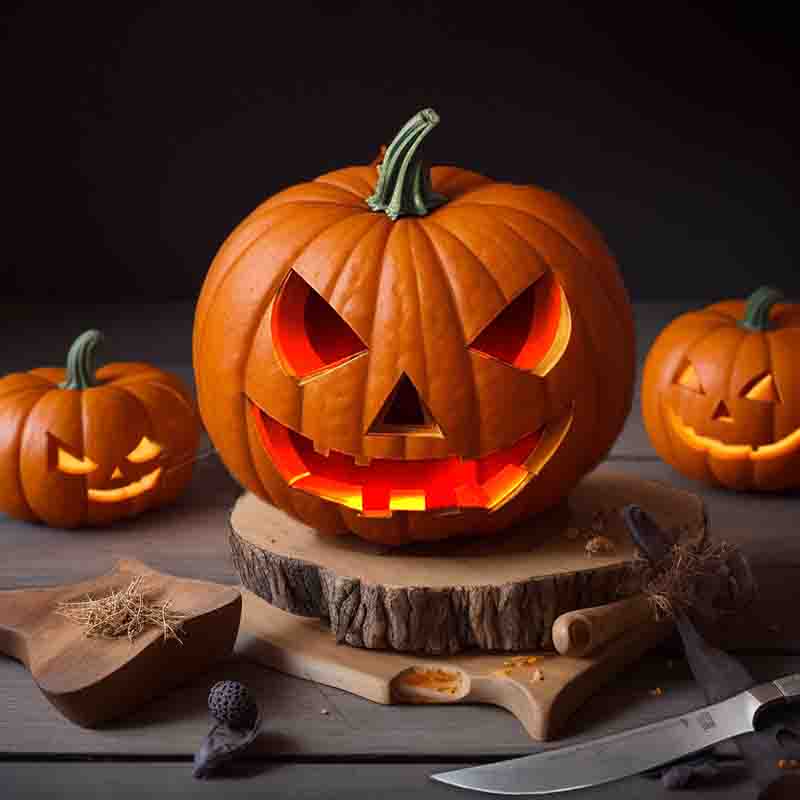
Halloween is more than just costumes and candy. It’s a rich blend of ancient traditions, cultural practices, and modern festivities that have evolved over centuries.
12 Facts to know about Halloween
-
Date: Halloween is celebrated annually on October 31st.
-
Origins: It traces back to the Celtic festival of Samhain, marking the end of harvest and the start of winter.
-
Christian Influence: Halloween later blended with All Saints’ Day, a Christian holiday honoring saints.
-
Costumes: Wearing costumes comes from the Celtic tradition of disguising oneself to avoid being recognized by spirits.
-
Trick-or-Treating: This practice evolved from medieval "souling," where people offered prayers for the dead in exchange for food.
-
Jack-o'-Lanterns: These originated from the Irish tale of Stingy Jack and were initially carved from turnips before pumpkins became popular in the U.S.
-
Global Celebrations: While most popular in Ireland and North America, other countries like Mexico (Día de los Muertos) and Japan celebrate Halloween with unique customs.
-
Commercial Success: Halloween is a major commercial event, with billions spent annually on candy, costumes, and decorations.
-
Haunted Houses: Creating haunted attractions is a popular activity during Halloween, designed to provide spooky experiences.
-
Movies and Media: Halloween has inspired a range of horror movies, with classics like John Carpenter's Halloween (1978) becoming part of the holiday’s tradition.
-
Symbols: Common symbols include ghosts, witches, black cats, and bats, reflecting the spooky theme of the holiday.
-
Colors: Orange: (for autumn and harvest) and black (symbolizing death and the supernatural) are the traditional colors of Halloween.
Throughout the 20th century, Halloween transformed into a commercial holiday, with an increasing focus on costumes, candy, and themed decorations.
Halloween is a holiday with a fascinating history that intertwines Celtic culture and traditions, Roman influences, and Christianization.
Today's Halloween celebrations, with pumpkin carving, creative costumes and the tradition of trick-or-treating, illustrate how versatile and thrilling this traditional holiday truly can be.
It has become a worldwide celebration revolving around the supernatural, the creative, and the community spirit inherent to the occasion.
Halloween is a widely celebrated holiday typically observed on October 31st. It's a festive occasion during which people engage in various activities such as dressing up in costumes, going trick-or-treating, attending parties, and decorating their homes. It's a great time for people to express their creativity, indulge in sweet treats, and enjoy a sense of communal festivity.
Detailed Timeline of the History of Halloween
Halloween, with its costume-clad children, haunted houses, and spooky carved pumpkins, is one of the most anticipated and cherished holidays in many parts of the world.
The history of Halloween traces back to the ancient Celtic festival of Samhain, which marked the end of the harvest season and the onset of winter, and was celebrated in the areas that today include Ireland, the United Kingdom and Brittany in France.
| Time Period | Key Developments | |
|---|---|---|
| 2,000 BCE | The Celtic festival of Samhain is celebrated in Ireland, marking the end of the harvest season and the beginning of winter. Samhain is believed to be the precursor of Halloween | |
| 43-410 CE | The Roman Empire's influence on Celtic territories leads to the merging of Samhain with two Roman festivals: Feralia, a day to commemorate the dead, and Pomona, a celebration of the Roman goddess of fruit and trees | |
| 9th Century | The Christian church establishes All Saints' Day on November 1st and All Souls' Day on November 2nd, incorporating elements of Samhain traditions into these religious observances | |
| 16th Century | The term "Halloween" is first recorded, derived from "All Hallows' Eve," the night before All Saints' Day | |
| 19th Century | Irish and Scottish immigrants bring Halloween traditions to North America, where they merge with Native American and other immigrant customs to form the basis for modern Halloween | |
| Late 19th Century | Halloween is primarily a night of community and neighborly get-togethers, with activities such as fortune-telling, divination, and storytelling | |
| Early 20th Century | Halloween parties become popular, featuring games, costumes, and pumpkin carving | |
| 1950s | Trick-or-treating gains widespread popularity as a safe and community-oriented way for children to celebrate Halloween | |
| 1970s | The holiday evolves to become more focused on costume parties and less on community events | |
| 1980s-1990s | Halloween becomes a significant commercial holiday, with the sale of costumes, decorations, and candy reaching new heights | |
| Late 20th Century | Controversies and concerns about safety lead to increased efforts to make Halloween a secure celebration for children | |
| 21st Century | Halloween remains a major cultural holiday in the United States and has spread to other parts of the world, evolving to include haunted attractions, festivals, and parades |
Halloween, with its variety of customs and traditions, is a record of the rich history of mankind and the evolution of cultural celebrations. It has evolved from ancient Celtic rituals to Christian customs to a vibrant and highly commercialized holiday.
The Celtic Roots: All Hallows' Eve

To fully appreciate Halloween, we must journey back in time to ancient Celtic festivals, tracing the evolution of customs, beliefs, and traditions that have shaped it into the holiday we know today.
How to Celebrate Halloween
-
Plan a Costume: Choose a fun or spooky costume that suits your style. You can make your own or buy one from a store. Popular themes include ghosts, witches, superheroes, and movie characters.
-
Decorate Your Home: Set the Halloween mood by decorating with pumpkins, spider webs, skeletons, and lights. Carve a jack-o'-lantern to place outside.
-
Host a Party: Organize a Halloween-themed party with activities like costume contests, bobbing for apples, and spooky games. Serve Halloween treats like candy apples or pumpkin pie.
-
Go Trick-or-Treating: If you have children, take them out trick-or-treating in your neighborhood. Make sure everyone is wearing reflective costumes or carrying lights for safety.
-
Visit a Haunted Attraction: Check out local haunted houses, corn mazes, or horror-themed events to get in the spooky spirit.
-
Watch Halloween Movies: Enjoy classic horror films like Halloween, Hocus Pocus, or The Nightmare Before Christmas to enhance the eerie atmosphere.
-
Hand Out Candy: Stay home and distribute candy to trick-or-treaters, ensuring you have a variety of sweets ready for the visitors.
-
Engage in Community Events: Participate in local Halloween parades, pumpkin patches, or charity events for a sense of community celebration.
Costumes are a big part of the market, with trends often driven by pop culture, and decorations like animated skeletons, fog machines, and detailed pumpkin carving kits have become household staples for Halloween enthusiasts.
Everything You Need to Know About the Spookiest Holiday
The night before All Saints' Day came to be known as "All Hallows' Eve," which later evolved into "Halloween."
The term "hallow" refers to saints and the holy, emphasizing the Christian nature of these observances.
As we celebrate Halloween, it's worth remembering its deep-rooted history and the traditions that have been passed down through generations, connecting us to our ancestors and the spirit of this enchanting holiday.
Roman Influence and Christianization
In the first century CE, the Roman Empire conquered many Celtic territories, leading to the eventual integration of Celtic traditions with Roman festivals.
One of the most influential Roman celebrations was Feralia, a day to honor the deceased.
As Christianity spread throughout the Celtic regions, the Church sought to Christianize the pagan celebrations, by transforming it into All Saints' Day.
To ease the transition for the Celtic people, the Church strategically placed All Saints' Day on November 1st.
The night before, October 31st, became known as All Hallows' Eve, which later evolved into Halloween.
This Christian influence introduced new customs to the Celtic traditions.
On All Saints' Day, the focus shifted from honoring deceased ancestors to venerating saints and martyrs.
Yet, the beliefs in spirits and the supernatural remained an integral part of the holiday, as seen in practices like lighting candles to guide spirits and the construction of soul houses, small structures filled with food for the deceased.
Medieval Customs: Souling and Guising

The essence of Halloween has evolved into a modern celebration that fuses the mysterious with the whimsical.
During the Middle Ages, the fusion of Celtic, Roman, and Christian traditions gave rise to new customs associated with Halloween.
"Souling" became a popular practice, in which people, often children, would go door-to-door offering to pray for the souls of the deceased in exchange for small "soul cakes."
This act of charity served as a way to distribute food to the less fortunate and was an early precursor to modern-day trick-or-treating.
In addition to souling, a custom known as "guising" emerged.
Guisers would dress in costumes, often disguising themselves as the deceased or supernatural beings, and visit homes to perform songs, poems, or tricks in exchange for food or coins.
This practice laid the groundwork for the modern tradition of trick-or-treating.
The Great Famine and the Irish Diaspora
In the 19th century, the Great Famine in Ireland led to a mass exodus of Irish immigrants to the United States.
With them, they brought their Halloween customs, including the practice of carving turnips into lanterns with grotesque faces.
This tradition would evolve over time into the carving of pumpkins, which were more readily available in the United States.
The name "Jack O'Lantern" is derived from the Irish folktale of "Stingy Jack," adding a spooky element to the carved lanterns.
The Birth of Modern Halloween
The late 19th and early 20th centuries saw the commercialization and modernization of Halloween in the United States.
Halloween became a community-centered holiday, with parties, parades, and a growing emphasis on costumes.
The influence of ghost stories and gothic literature, including Edgar Allan Poe's works, contributed to the holiday's association with the macabre.
During this period, Halloween also saw the emergence of postcards, which depicted spooky and humorous scenes associated with the holiday.
These postcards became sought-after souvenirs and later made it all the way into the art industry, where they are now considered precious relics of Halloween's past.
Contemporary Halloween

Witches, vampires, zombies, and ghosts remain classic choices, but the influence of movies, TV shows, and pop culture brings new trends each year. From superheroes and iconic characters to pun-based costumes, the possibilities are endless.
Today, Halloween is not solely about warding off spirits or practicing divination; it's about embracing the spooky and the whimsical, the creative and the macabre.
From its early roots in disguising oneself from malevolent spirits, Halloween costumes have grown into a creative and expressive art form.
Children and adults alike don costumes and visit homes, saying the phrase "trick or treat" in exchange for candies or small gifts.
Trick-or-Treating: A Sweet Tradition
The origins of trick-or-treating can be traced back to the medieval European practice of "souling."
In the early 20th century, Halloween evolved into a holiday centered around community and family.
Children began dressing up in costumes and going door to door, saying the phrase "trick or treat" to receive candy or small gifts.
The tradition of trick-or-treating is a testament to the community-centered nature of Halloween.
It's a cherished experience for children, who get to explore their creativity in costume selection, and for homeowners, who delight in providing treats for the young visitors.
The "trick" part of the phrase harks back to the notion that, if not appeased with a treat, the costumed visitors might play a mischievous prank on the homeowner.
The practice also reinforces the idea that Halloween is not merely a holiday but a collective experience that transcends generations and fosters a sense of belonging.
The Evolution of Halloween Costumes
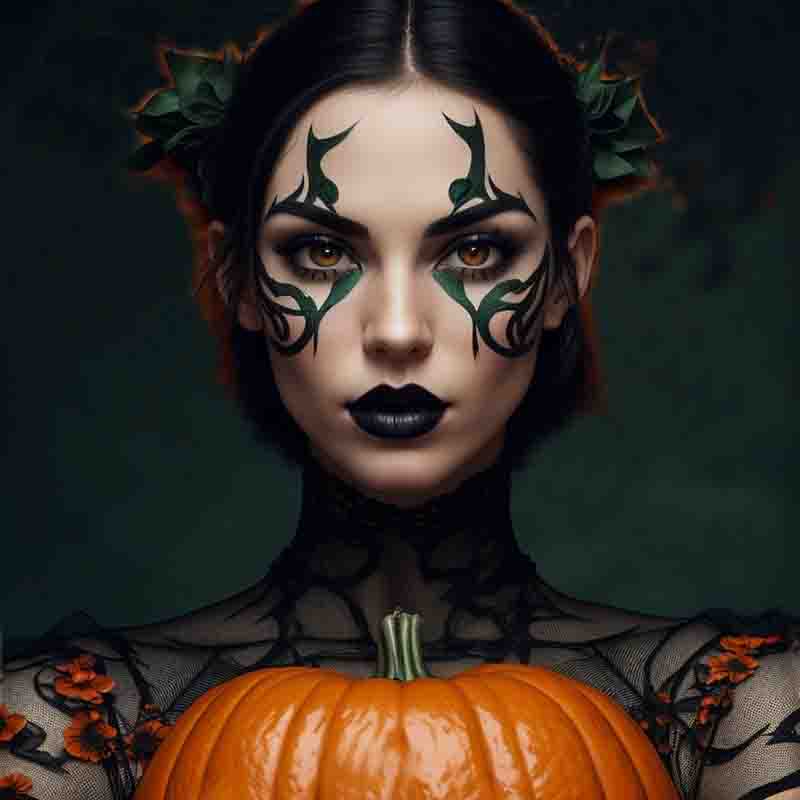
Halloween's influence is not limited to traditions and celebrations. It has become a cultural phenomenon that permeates entertainment.
Halloween costumes have come a long way from their humble origins.
Early Halloween costumes had a clear and pragmatic purpose: to disguise the wearer from malevolent spirits.
This belief led to costumes intended to mimic spirits or appease them.
Masks and disguises were employed to confuse or elude vengeful entities.
Over time, costumes evolved into an exciting and creative aspect of Halloween.
Today, Halloween costumes run the gamut from spooky and traditional to pop culture-inspired and downright extravagant.
Popular costume themes have included witches, vampires, zombies, and ghosts.
However, with the influence of movies, TV shows, and video games, costume trends often shift each year.
Recent years have seen a surge in costumes inspired by superheroes, characters from popular franchises, and internet memes.
The appeal of dressing up is not limited to children; adults participate with equal enthusiasm.
The spirit of Halloween embraces the freedom to become someone or something entirely different for a day.
Bobbing for Apples: An Ancient Harvest Ritual
Bobbing for apples is a classic Halloween game that has its origins in ancient Celtic traditions, particularly the festival of Samhain.
The tradition of bobbing for apples was a way to celebrate the harvest and seek divination for the future.
In this ancient custom, apples, often symbols of love and fertility, were placed in a large tub of water.
Participants would attempt to catch an apple with their teeth while blindfolded.
The first person to successfully do so was said to be the next to marry or have good fortune in the coming year.
As time passed, this tradition evolved and made its way into Halloween celebrations.
While the divination aspect diminished, bobbing for apples remained a popular party game, particularly in the United States and the United Kingdom.
Telling Ghost Stories: Embracing the Supernatural
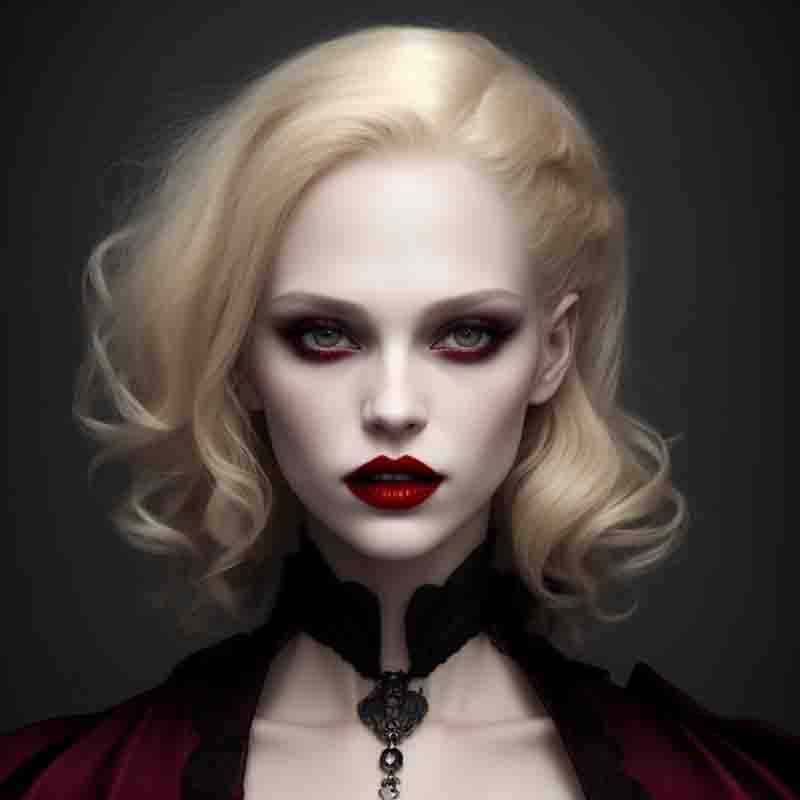
Halloween's influence extends well beyond its historical and cultural roots. It has become a fixture in pop culture. Movies, TV shows, music, and advertising are infused with the spirit of Halloween.
Telling ghost stories on Halloween has deep historical roots that trace back to ancient Celtic traditions and the Christian observance of All Saints' Day.
Early Celts would light bonfires and tell stories to keep these malevolent spirits at bay.
Over time, this tradition evolved, with tales of ghosts and the supernatural becoming a hallmark of Halloween celebrations.
By the 19th century, especially in the United States, telling ghost stories became a prominent part of Halloween festivities.
One of the most famous ghost stories associated with Halloween is Washington Irving's "The Legend of Sleepy Hollow."
Published in 1820 as part of Irving's "The Sketch Book of Geoffrey Crayon, Gent.," the story of the Headless Horseman has become an iconic and enduring part of Halloween lore.
Ghost stories were not only a means of entertainment but also a way for communities to bond and share in the thrill of the unknown.
They were often passed down through generations, contributing to the creation of urban legends and spooky folklore that still resonate with people today.
Carving Jack-o'-Lanterns: A Frightening Ward Against Evil
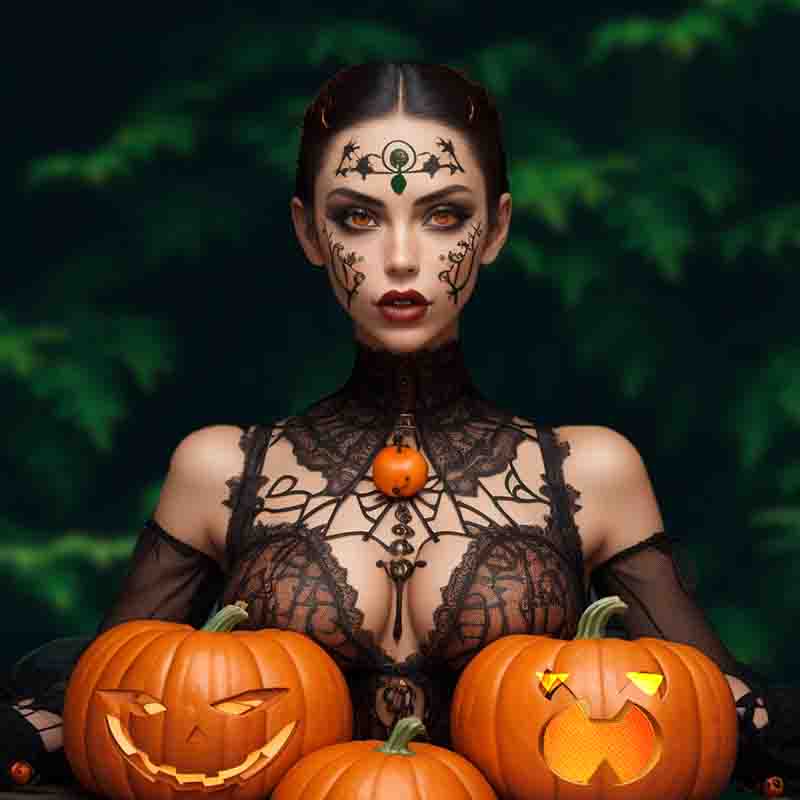
Halloween customs like bobbing for apples, telling ghost stories, carving Jack O'Lanterns, and trick-or-treating have deep historical roots that have been passed down through generations.
The practice of carving Jack O'Lanterns, typically using pumpkins, is a Halloween tradition with its roots in Irish folklore.
The story goes that Jack was a deceitful and miserly individual who managed to trick both the Devil and God.
When he died, he was neither allowed into Heaven nor Hell and was condemned to wander the Earth with only a carved turnip lantern to light his way.
Originally, the Irish would carve turnips, potatoes, or beets into lanterns with grotesque faces, placing them near doors and windows to ward off Stingy Jack and other malevolent spirits on Halloween.
When Irish immigrants brought this tradition to the United States, they found that pumpkins, which were more readily available and easier to carve, were better suited for the purpose.
The practice of carving pumpkins into jack-o'-lanterns quickly took root and became a cherished Halloween tradition.
Jack O'Lanterns serve a dual purpose in modern Halloween customs.
They are both a creative outlet for carving intricate and often frightening designs, and they act as a symbol of protection against evil spirits, adding an element of charm to the spooky holiday.
The Art of Halloween Pumpkin Carving
One of the most visually striking and cherished Halloween traditions is pumpkin carving.
This artistic practice, born from Irish and Celtic traditions, has become an essential part of modern Halloween celebrations.
The art of carving pumpkins involves transforming an ordinary gourd into a glowing, eerie masterpiece.
The custom is rooted in the Irish and Scottish practice of carving turnips or potatoes, but it was the availability of pumpkins in the United States that elevated this tradition.
Carving pumpkins allows for intricate designs and a spooky atmosphere.
From simple Jack O'Lanterns faces to intricate scenes, pumpkin carving is an outlet for creativity and a chance to celebrate the artistic side of Halloween.
Tips for pumpkin carving often include selecting the right pumpkin, designing a pattern, and safely carving the pumpkin with the appropriate tools.
Learning about the history and techniques of pumpkin carving adds a new layer of appreciation for this iconic Halloween activity.
Halloween Around the World

Whether you're trick-or-treating, carving pumpkins, or attending a Halloween party, you're participating in a tradition that spans centuries and continues to bring joy and a touch of the supernatural to our lives.
Different countries have their unique ways of celebrating Halloween or similar festivals that reflect their cultures and histories.
While Halloween is a widely recognized holiday, other cultures have their own traditions and celebrations that share common themes of honoring the deceased.
Understanding how different countries embrace Halloween or similar celebrations sheds light on the global resonance of the holiday and the diverse ways in which people connect with the supernatural.
-
Ireland - Samhain: Ireland has historical connections to Halloween through the Celtic festival of Samhain. Traditionally, it marked the end of the harvest season and the beginning of winter. Bonfires were lit, costumes were worn, and people believed the boundary between the living and the dead was thin.
-
Mexico - Dia de los Muertos (Day of the Dead): Dia de los Muertos is a vibrant and colorful Mexican holiday celebrated from October 31st to November 2nd. Families create ofrendas (altars) with offerings of food, drinks, and marigold flowers to honor and remember deceased loved ones. They visit cemeteries to clean and decorate graves, and many people paint their faces as colorful skulls, known as "calacas."
-
Japan - Obon Festival: The Obon Festival, typically held in July or August, is a Buddhist celebration in Japan to honor deceased ancestors. Families light lanterns and place them on rivers to guide ancestral spirits back to the living world. Dance festivals, known as "bon odori," are held in various regions.
-
China - Hungry Ghost Festival: Celebrated in August, the Hungry Ghost Festival is a Taoist and Buddhist tradition. People believe that the gates of the afterlife are open, and offerings are made to honor deceased ancestors and appease wandering spirits. Elaborate displays, incense, and food are common offerings.
-
South Korea - Chuseok: Chuseok, celebrated in autumn, is a Korean harvest festival that shares similarities with Thanksgiving. Families pay respects to ancestors through ceremonies, prepare special foods, and visit their ancestral hometowns to clean and maintain graves.
-
Austria and Germany - All Saints' Day (Allerheiligen) and All Souls' Day (Allerseelen): In these countries, All Saints' Day (November 1st) and All Souls' Day (November 2nd) are marked by visiting cemeteries and lighting candles on graves to honor the deceased. Families also create floral arrangements and wreaths.
-
Philippines - Undas: Undas, observed during All Saints' Day and All Souls' Day, is a time for Filipinos to visit cemeteries and memorial parks to pay respects to their ancestors. Families clean, paint, and decorate the graves and offer prayers and flowers.
-
Sweden - All Saints' Day (Alla helgons dag): All Saints' Day is celebrated on the first Saturday of November in Sweden. Families light candles on graves, and it's a quiet and reflective time to remember the deceased.
-
Hungary - Halottak Napja (Day of the Dead): Halottak Napja, celebrated on November 1st, involves lighting candles on graves, offering flowers, and attending church services. Families also place a lit candle in the window to guide the souls of the dead.
-
Ghana - Homowo: Homowo is a harvest festival celebrated by the Ga people in Ghana. It involves music, dancing, feasting, and paying respects to ancestors through libations.
These diverse celebrations showcase how different countries commemorate the deceased and embrace the mystical aspects of life and death.
While the customs may vary, they all emphasize the importance of family, remembrance, and paying respects to those who came before us.
Coincidence and Symbolism
The publication of the Bitcoin Whitepaper on October 31, 2008, coinciding with the date of the Celtic festival of Halloween, presents an intriguing and somewhat symbolic connection.
The coincidence lies in the fact that the publication date, which introduced a revolutionary financial concept, aligns with a festival associated with the crossing between different worlds.
One could interpret this constellation as a token representation of the disruptive nature of blockchain technology.
Happy Halloween
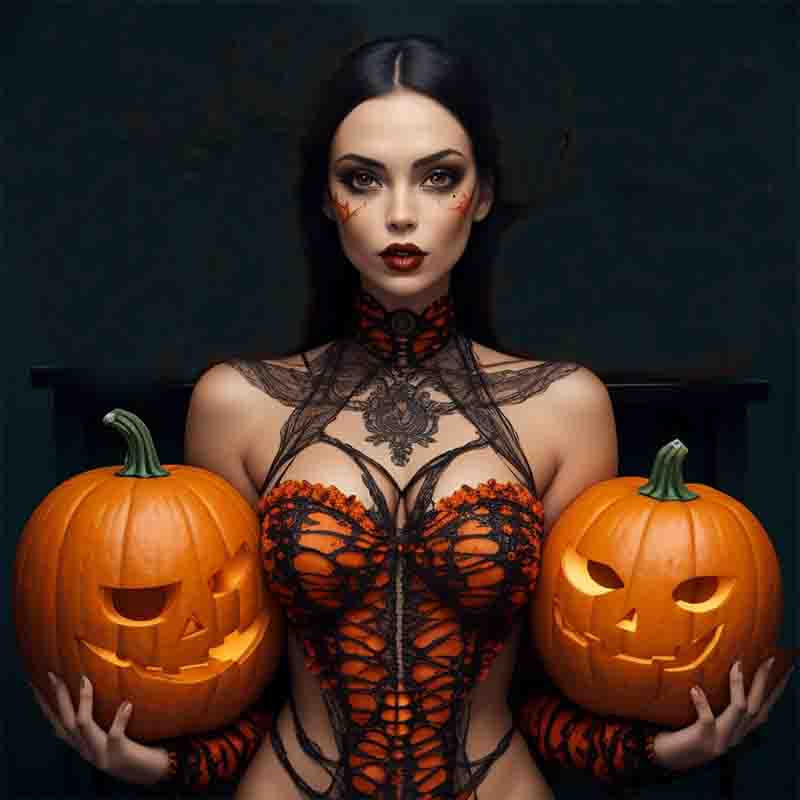
A Halloween costume contest adds a competitive edge to the party and encourages guests to get creative with their outfits.
Halloween is not just a holiday; it's a celebration of our shared humanity and a testament to our enduring connection to the past.
From its ancient Celtic origins to today's celebrations, Halloween is an interplay of tradition, creativity and cultural diversity.
It reminds us that even in the darkest of times, there's room for fun, laughter, and the thrill of the unknown.
So, as the leaves begin to fall and the air turns cool, embrace the magic of Halloween, and let your imagination run wild.
Culinary Tradition of Halloween
The culinary tradition of Halloween is a delightful and spooky celebration of food and drink that has evolved over centuries.
Halloween recipes cater to various tastes, from sweet treats to savory delights.
Whether you're hosting a Halloween party or just looking to add some festive fun to your meals, these recipes are sure to impress your guests and create a spooky and memorable culinary experience.
-
Witch's Brew Punch: Witch's Brew Punch is a vibrant green concoction that's perfect for Halloween. You'll need lime sherbet, pineapple juice, lemon-lime soda, and limeade concentrate. To make it, scoop lime sherbet into a punch bowl, pour in pineapple juice and lemon-lime soda, and then add a can of limeade concentrate. Stir until well combined. The sherbet will create a bubbly, frothy effect, and the flavor is a delightful mix of sweet and tangy.
-
Mummy Hot Dogs: Mummy hot dogs are a fun and spooky treat. Wrap cocktail sausages in strips of crescent roll dough, leaving a gap for the "eyes." Place small dots of mustard or ketchup for the eyes. When baked, the dough puffs up and browns, creating a mummy-like appearance with the sausages peeking out.
-
Spider Web Pizza: Transform your favorite pizza into a spooky spider web by piping pizza sauce in concentric circles on top of the cheese. Use a toothpick to pull lines from the center to the outer edge to create a web design. Place olive slices on the pizza to represent spiders. Bake as usual.
-
Witch Hat Cookies: Witch hat cookies are a sweet and creative Halloween treat. Start with chocolate-striped shortbread cookies as the base and place a chocolate kiss (pointy side down) on top to represent the witch's hat. Attach the "hat" with orange or black icing, and you can even add a decorative icing buckle.
-
Pumpkin Soup: A warm and comforting pumpkin soup is an ideal choice for Halloween dinner. You can prepare a creamy pumpkin soup by simmering pumpkin puree, broth, and a combination of spices. Serve with a dollop of sour cream or a swirl of pesto for a visually striking and delicious meal.
-
Caramel Apples: Traditional caramel apples are a delightful Halloween treat. Melt caramel, either homemade or store-bought, and dip apples into the warm, gooey caramel. Afterward, roll them in crushed nuts, chocolate chips, or candy sprinkles for added flavor and texture.
-
Apple Cider: Apple cider, often served warm, is a quintessential fall beverage and a staple at Halloween gatherings. It can be enhanced with spices like cinnamon and cloves for a cozy and comforting flavor. For an adult twist, consider spiking it with a shot of spiced rum or bourbon.
-
Wormy Ice Cubes: For an extra eerie touch, make worm-shaped ice cubes by freezing gummy worms inside. These ice cubes can be added to various beverages, from water and lemonade to cocktails, creating a spine-chilling visual.
Whether it's trick-or-treating for candy, hosting themed parties, or simply indulging in favorite fall treats, Halloween culinary traditions add a delicious and enjoyable dimension to this festive holiday.
Halloween: FAQ
Are you curious about music, art, technology, fashion, lifestyle, and beer?
If so, then you need to subscribe to the free Likewolf newsletter.
100% privacy. When you sign up, we'll keep you posted.
From Harvest to Haunting
Samhain's ancient Celtic roots continue to influence and inspire
